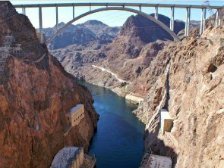Hoover Dam Construction History
Hoover Dam's construction history is just as interesting as the dam itself. The Colorado River presented itself as a huge potential for irrigation of the much needed water in Southwest United States.
The first attempt to use the Colorado River for irrigation was made in the 1890s by constructing the Alamo Canal close to the Mexican Border. While the Alamo Canal allowed the Imperial Valley to be settled, maintaining the canal was very expensive.
Get Your Free Las Vegas Events Calendar!
Grand Canyon Helicopter Tours by Papilloin
Grand Canyon Helicopter Tours by Maverick
Awesomest Things to do in Las Vegas Every Day!
Tours from Las Vegas
Over the years the electric power transmission technology improved and Lower Colorado was once again considered for hydroelectric-power. The river was surveyed by the Edison Electric Company with the hope of building a rock dam that could generate power. However, identifying a suitable area for the construction of the dam was not as easy. The Reclamation Service's Fall-Davis Report was presented in 1922 and this report clearly mentioned how important it was to build a dam on the Colorado River for generating electric power and for controlling floods. This report identified Black Canyon to be the ideal location. Even though the site was shifted to Black Canyon, the dam was still called Boulder Dam.
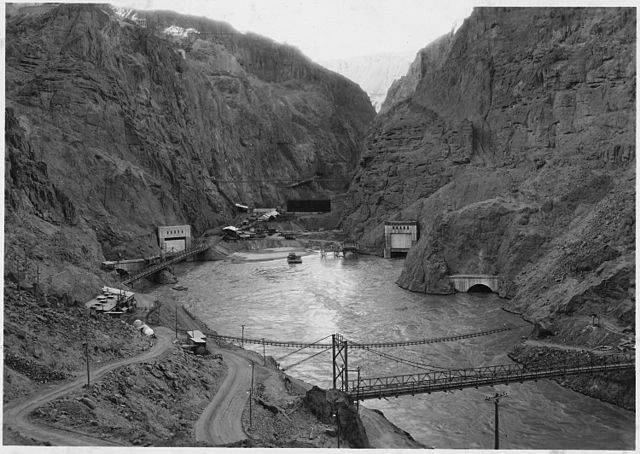
Hoover Dam Construction Site - Black Canyon
The official bill to authorize the construction of the dam was signed by President Coolidge on 21st December, 1928. The project was a huge undertaking and it was estimated to cost $165 million, including the All-American Canal and the Imperial Dam. The bidding process itself presented several challenges. The bid documents were made available on 10th January, 1931 at the cost of $5 for a copy. The materials were to be provided by the government but the selected contractor would be responsible for preparing the selected site as well as constructing the dam. Since the dam was a very complex project, bidders were provided a lengthy report that described the dam over 100 pages and included 76 detailed drawings. The selected contractor would have to build the dam within 7 years to avoid penalties. Each bidder was required to put in a bid bond of $2 million while the winner would have to put in a performance bond of $5 million.
Because of the Great Depression, the performance bond presented a huge challenge to bidders. The Wattis Brothers of the Utah Construction Company were no different. However, they came up with a unique solution. To come up with the performance bond, the brothers joined hands with J.F. Shea Company, MacDonald & Kahn Ltd., W.A. Bechtel Company, Henry J. Kaiser and Pacific Bridge Company, collectively called the Six Companies. Their bid was the lowest at $48,890,955 and was therefore selected.
Once the Hoover Dam construction was officially authorized, thousands of unemployed travelled to southern Nevada looking for a job. As many as 20,000 people travelled to Las Vegas to work on the project. The Six Companies had 5,251 workers on their payroll by July 1934. Accommodating these workers was not an easy job. Las Vegas, quite a small town at the time, tried hard to be named the headquarters for the project. However, its efforts proved to be futile when it was decided that a model city, Boulder City, would be built close to the site in 1930.
The name of the dam was always surrounded by controversies. During the initial years before the dam was authorized in 1928, the project was called "Boulder Dam" even though it was actually located in Black Canyon. However, in 1930 Ray Lyman Wilbur, the Secretary of Interior, travelled to Nevada and unofficially announced that the new name for the project will be "Hoover Dam" in honor of Herbert Hoover, the President of the country at the time. This announcement sparked a lot of controversy since most citizens blamed President Hoover for the country's crippling depression. When Herbert Hoover lost the presidential elections, the dam was renamed "Boulder Dam". Twelve years later, in 1947, President Truman signed a resolution and once again changed the name of the dam to its current name, "Hoover Dam".
Shortly after losing the presidential elections, Herbert Hoover paid an unexpected visit to the dam on his way back to Washington. That was the first and the only time he visited the dam.
Hoover Dam Construction
The Hoover Dam was constructed during the Great Depression and it took millions of dollars and thousands of workers to complete the project. It provided employment to thousands of people during a time when finding jobs was a big challenge. In order to accommodate the workers, the McKeeversville camp was created close to the site. This site became home to men who worked on the project and their families. Williamsville or Ragtown was another camp located along the river on the flats.
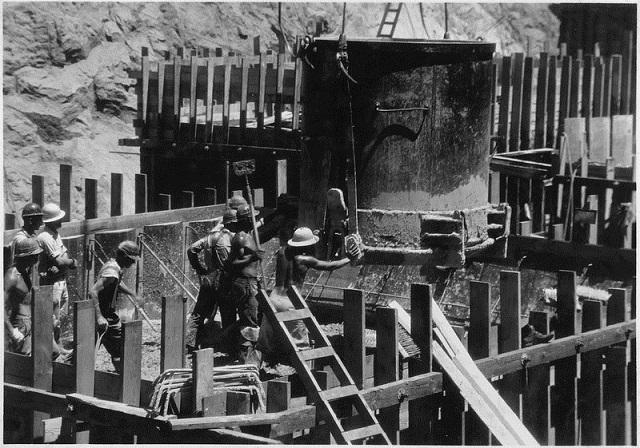
Construction of Hoover Dam
A very large number of workers were hired by the Six Companies after the construction work on the dam began. At its peak in July 1934, the Six Companies had 5,251 people on their payroll. The construction contract forbade Mongolian workers from working on the construction. While the Six Companies did employ a very small number of African American workers, they mostly had the lowest paying labor jobs in a separate crew. The contract required the Six Companies to build the new Boulder City to accommodate the workers. Originally, the city was required to be built before the work on the project began. However, the construction was ordered to begin 7 months before the scheduled date by President Hoover. As a temporary measure, the Six Companies built several bunkhouses to accommodate 480 men. Known as the River Camp, the bunkhouses only provided accommodations to single men. Workers with families had to fend for themselves until Boulder City was completed. Several of these workers lived in Ragtown.
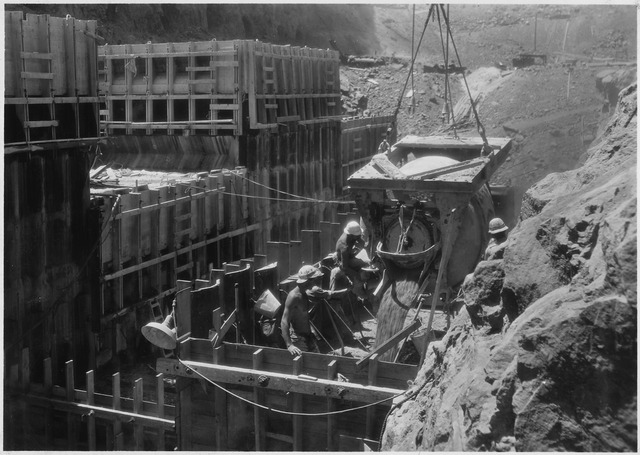
Hoover Dam construction workers
The site of the dam was a very difficult place to work in with very hot temperatures. The summer of 1931 was ruthless with temperatures of 48.8 °C on an average. 16 workers lost their lives due to extreme heat. However, heat and unpleasant living conditions weren't the only problems that the workers faced. In august, 1931, the Six Companies reduced the wages of the tunnel workers. The workers created a committee to negotiate with the company. They came up with a set of demands and presented it to the general superintendent, Frank Crowe. However, they failed to generate any sympathy.
In fact, the management did not accept any of the demands. Instead, they stopped the work and decided to lay off the work force, all except a few carpenters and office workers. The workers were required to vacate the same day. Most workers simply picked up their pay and left. The remaining workers were asked by the law enforcement to leave two days later. In August, the company hired new workers again and the strike ended. Although the company did not agree to any of the demands of the workers, they promised that their wages would not be cut. Once the Boulder City was created in late 1931, the living conditions for the workers improved greatly.
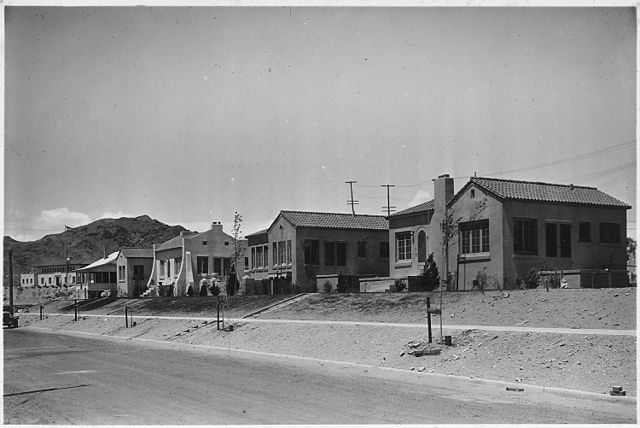
Boulder City in 1932
Hoover Dam Construction History Facts
Source: Wikipedia



